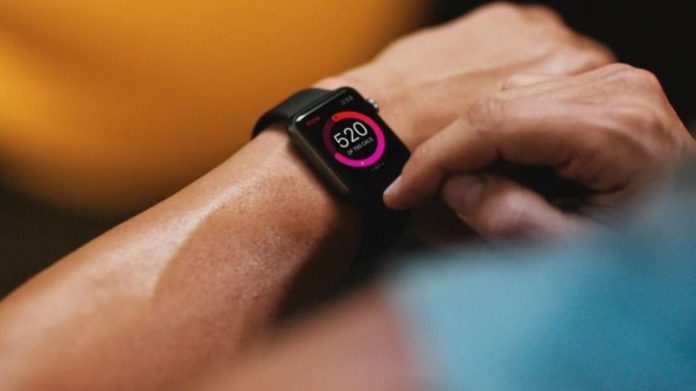
Apple finally took the wraps off its much-rumored Apple Watch on Tuesday, showing off features and functions on the wrist-mounted device, which is poised to shake up the growing wearables industry.
Although the Apple Watch won’t be available until early 2015, and there were limited opportunities for even those at the event to touch the device, the technology contained in the Apple Watch is, at first blush, pretty impressive. Let’s take a look at what we know so far.
Digital Crown
The Digital Crown on the Apple Watch is something of a throwback as it’s a return to the physical rotation mobile controller we saw on the original iPod. In that respect, it almost seems like the Digital Crown is a first-generation curio, destined to be replaced in future iterations.

Image: Apple
Nevertheless, in the area of wearables, it’s a welcome innovation. Instead of forcing you to try to use the tiny screen as a touch interface, the Digital Crown allows you to scroll through apps and menus on the screen and push down on the knob to return you to the home screen. It also works with a couple of key features:
Siri
Like the iPhone, all you need to do to activate Siri on the Apple Watch is raise your wrist, or press and hold the Digital Crown and say “Hey Siri” to enable voice interaction.
Apple Pay
Just beneath the Digital Crown is an oval button that gives you easy access to Apple Pay, the company’s NFC-enabled mobile payments system. Simply double-click the button and then hold your wrist up to an associated contactless reader and you can pay via your Apple Phone. The device also delivers a haptic and audio confirmation to your wrist once your payment transaction has been completed.

Image: Apple
Screen
The square screen of the Apple Watch is a flexible Retina display, protected by a layer of sapphire glass. That screen is further strengthened in the Sport version of the watch, which adds extra protection by using ion-strengthened glass called Ion-X glass.
Force Touch
While the display technology is built to withstand a good deal of abuse, it also has a sensitive side. The display can sense the force being applied to it by using a tiny array of electrodes around its flexible Retina display, enabling the screen to determine the difference between a tap and a press.
Sensors
On the back of the watch is where a lot of the magic happens, in this case, a sensor array. Using a Zirconia backing, the Apple Watch has four embedded sapphire lenses that use infrared and visible-light LEDs along with photodiode sensors to detect the wearer’s heart rate.
According to Apple, these sensors, along with the device’s gyroscope and accelerometer can, when paired with GPS and Wi-Fi from your iPhone, deliver an incredibly detailed analysis of your daily movements.

Image: Apple
Health Tracking
Some of the measuring apps include: Move Ring, which measures how much you move and calculates how many calories you’ve burned; Exercise Ring, which measures any exercise, or general brisk activity; and Stand Ring, which measures how long you take stand-up breaks from sitting.
Overall, the device’s back-mounted sensors seem to offer a great deal of information for anyone obsessed with the “quantified self,” but the requirement of having an iPhone nearby for GPS seems like a bit of a shortcoming in that it won’t free runners from having to strap an iPhone onto their arm.
Taptic Engine
Termed as a linear actuator by Apple, the Taptic Engine delivers haptic feedback to the wearer. Combined with the device’s audio speaker, the Taptic Engine offers an experience that could make the Apple Watch seem somewhat immersive, even though it’s on your wrist.

Image: Apple
Chip
To driver the Apple Watch, Apple created a custom S1 SiP (System in Package) chip stack. Apple integrated a number of subsystems into one module, which was then housed in a resin designed to protect it from normal wear and tear.
It sounds good, but we won’t know exactly how powerful the chip really is until we get to use the device.
Inductive Charging
Some are calling the Apple Watch the mainstreaming of wearables as well as NFC, but it also appears to be an attempt at the mainstreaming of inductive charging, which is still only in limited use.

Image: Apple
The back of the Apple Watch has a circular inductive charger, which easily connects via MagSafe technology (the same mechanism used for Macbook power connectors). Once connected magnetically to the back of the watch, the connection is seamless and needs no additional alignment by the user.
Based on Chief Executive Tim Cook’s comments during the unveiling of the Apple Watch, the battery lasts for one day, although specifics haven’t been made available yet.
Extras
All this and more! The Apple Watch also features Wi-Fi 802.11b/g, Bluetooth 4.0 and features a proprietary strap mechanism that may foil would be third-party accessory makers.

Image: Apple
The Apple Watch Edition, which appears to be the high-end version of the device, is swathed in 18k gold, which Apple says it has developed to be “up to twice as hard as standard gold.”
Scheduled to be available sometime in early 2015, Apple hasn’t revealed the complete price list for all versions of the Apple Watch, but we know that the entry-level version will cost $349.
BONUS: Apple Watch Commercial Reveals Time Travel Feature
[embedded content]
